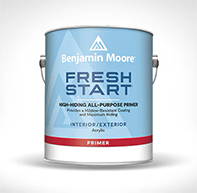How To Paint Beadboard Panels and get Professional Results
Below are the steps required to get professional painting results. In each step we give product recommendations based on our painting experience. If you have questions with regards to the the painting process or painting products you can give us a call.

Step by Step Process to Prime and Paint Beadboard
1) Ready Patch
Ready Patch nail holes, outside corner butt joints and molding scarf joint seams. Do not Ready Patch inside corner seams because you will caulk them in step 7. Ready Patch is the preferred wood filler because it spreads easy, does not shrink, dries quickly and can be primed when dry to the touch.
Best Practice: Remove nail hole pucker (mushroom appearance) with a straight razor before filling with Ready Patch.

2) Lightly Sand
Lightly Sand Ready Patched nail holes and seams with 240 Grit Sponge Sandpaper 5" x 5" -Lightly Sand Ready Patched nail holes and seams with 240 Grit Sponge Sandpaper 5" x 5" - This sponge sandpaper is ideal for getting into the crevices of the beads.

3) Vacuum and Wipe Beadboard with Tack Cloth
Vacuum the Beadboard and the moldings to pick up the majority of the dust and use a clean tack cloth to wipe down the beadboard panels and the moldings.

4) Prime Beadboard and Moldings
Prime the beadboard and moldings with a good acrylic primer. We have had great success with Fresh Start Primer (high hiding) from Benjamin Moore because it covers well, dries fast and sands easily.
Prime the top cap and baseboard moldings in the horizontal direction and prime the beadboard panels in the vertical direction. We recommend a high quality rat tail paint brush. A rat tail brush is ideal for fine trim painting because it is not as thick as a standard brush and will not hold too much paint. Elder & Jenks or Purdy 2 1/2" Rat Tail Angle Sash Brush with 100% Chinex Chiseled Filaments is a great brush that is made in the USA.
You can also use a 4" wide Micro Fiber Mini Roller to apply paint to the panels but you will want to go over the rolled section with the Rat Tail Brush to make sure the primer is spread evenly over the flats and valleys of the beadboard panel.

5) Lightly Sand
Lightly sand the primed surfaces with 320 Grit Sponge Sandpaper 5"x5". Most of the focus should be on the crevices of the beads and the ready patched areas.

6) Vacuum and Wipe Beadboard with Tack Cloth
Vacuum the beadboard and the moldings to pick up the majority of the dust and use a clean Tack to wipe down the panels and the moldings.
If necessary apply a second coat of primer, repeat light sanding and cleaning steps.

7) Caulk
Caulk inside corner and bottom of beadboard panels to fill the void between the beadboard and the baseboard molding with a quality paintable caulk such as Dap Alex Plus Latex Caulk.

8) Vacuum and Wipe Beadboard with Tack Cloth
Vacuum the Beadboard and the moldings to pick up the majority of the dust and use a clean Tack cloth to wipe down the panels and the moldings.

9) Paint Beadboard with Quality Trim Paint
Start painting from one side of the wall section and work across painting the moldings and beadboard panels together. Paint the top cap and baseboard in the horizontal direction and the beadboard panels in the vertical direction. Don't paint more than 10" across at a time. This process of moving across simultaneously is important so that the paint won't setup and get tacky.
Never paint from the gallon container. We recommend pouring a couple of inches of paint into a paint trim cup.
We recommend a high quality rat tail paint brush. A rat tail brush is ideal for fine trim painting because it is not as thick as a standard brush and will not hold too much paint. Elder & Jenks or Purdy 2 1/2" Rat Tail Angle Sash Brush with 100% Chinex Chiseled Filaments are great choices.
You can also use a 4" wide Micro Fiber Mini Roller to apply paint to the panels but you will want to go over the rolled section with the Rat Tail Brush to make sure the paint is spread evenly over the flats of the panels.
Use a good quality trim paint. We have had great success with Advance by Benjamin Moore. It provides a premium quality finish designed for interior trim. It is formulated to give a hard, tough scrubbable finish and is ideal for beadboard wainscoting.
When picking the sheen, our preference is the Satin because it is more forgiving than a semi-gloss with regards to showing slight imperfections.
Coverage - Each gallon of Advance Paint will cover approximately 300 square feet. Example - if your beadboard kit is 3 feet tall you should be able to paint approximately 100 linear feet per gallon, so if you are applying 2 coats of paint each gallon will cover approximately 50 linear feet.

